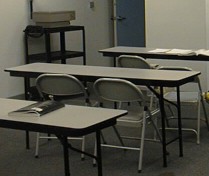It could be argued that these do not fix the problem as much as prevent its consequences. This is probably true, however, until you find an intervention tha works, or while you are in the process of using Applied Behavior Analysis or some other method, and until it works, here are some recommendations for keeping the child and those around him safe.
 Remember the child with Autism who I said complained about how loud the student next to him was? How it bothered him that the student tapped his pencil on the desk, or occasionally pronounced a word under his breath as he was reading?
Remember the child with Autism who I said complained about how loud the student next to him was? How it bothered him that the student tapped his pencil on the desk, or occasionally pronounced a word under his breath as he was reading?
This was not the only student with Autism in the school who had trouble getting along with other students. That is how we put it – getting along with them. Sometimes, these students would get so frustrated they would punch another student, hit him with a chair, yell or curse at hime.
And what did we, not-so-brilliant staff members do to correct this behavior? We would put the student in “time-out” in an empty classroom, by himself and let him work by himself. We reasoned that if the student could not be with his peers he would get bored and learn to behave himself. Did this work?
No! It was so far from working it would be funny if I did not realize twenty years later what idiots we were. If what was bothering the student was too much noise, distraction, movement – and we put him in an empty classroom where it was much calmer, that was an improvement. We had students who would work in a room all by themselves for months on end. It was not an effective “punishment” but it was effective in making life easier for the students who, in this case, were clearly smarter than the teachers.
